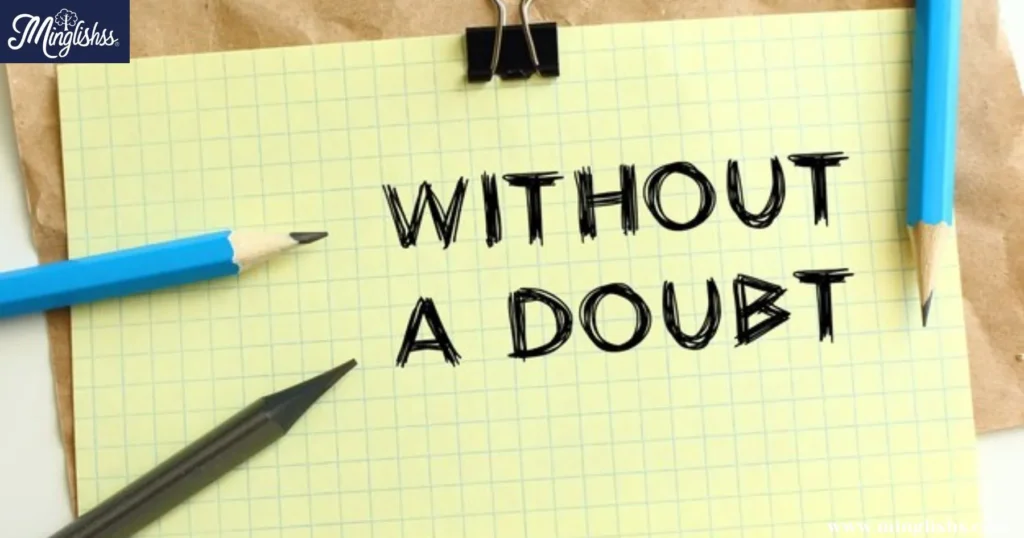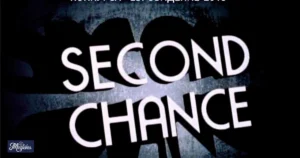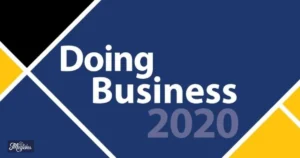“Totally agree” can be expressed in so many refreshing ways!
Finding new ways to express agreement can add a fresh dynamic to conversations. Saying “I totally agree” can become repetitive, especially in business or social settings where you want to show engagement or enthusiasm. Using varied language makes your response feel more thoughtful and genuine, adding depth to your exchanges.
Ready to express your agreement in new ways? This guide will explore 35 engaging alternatives to “totally agree,” offering you phrases for different scenarios. These alternatives are versatile for professional settings, friendly chats, or even social media. Scroll down to find practical, relatable examples you can start using today!
Understanding how to diversify language can help improve communication in any setting. This article will walk you through different ways to express strong agreement, including examples, context explanations, and tips for each phrase. By the end, you’ll have a toolkit of expressions to make your conversations sound more engaging and relatable.
Alternatives to “Totally Agree” with Scenarios and Tips
1. “Absolutely!”
- Scenario: When discussing a project’s direction with a colleague, you might say, “Absolutely! I think this approach will lead us to success.”
- Explanation: “Absolutely” conveys enthusiasm and certainty, making it ideal for agreeing on shared goals.
- Tip: Use this to sound upbeat and committed, especially in positive team settings.
2. “Without a doubt!”

- Scenario: Your friend suggests a weekend hiking trip, and you respond, “Without a doubt! I’m ready for it.”
- Explanation: This phrase is reassuring and shows unwavering support or agreement.
- Tip: Use it to add an extra level of confidence, especially when giving approval to someone’s idea.
3. “I’m with you on that.”
- Scenario: A coworker voices concern over a project deadline, and you respond, “I’m with you on that. We need a little more time.”
- Explanation: This phrase creates a sense of camaraderie and understanding.
- Tip: Great for situations where you want to show empathy while agreeing.
4. “I couldn’t agree more.”
- Scenario: Discussing a new restaurant with a friend, you say, “I couldn’t agree more; that place sounds perfect!”
- Explanation: This phrase emphasizes that your level of agreement is as high as it can be.
- Tip: Perfect for emphasizing your enthusiasm without needing to over-explain.
5. “Exactly!”
- Scenario: When a teammate summarizes a complex plan, you reply, “Exactly! That’s precisely what we need to do.”
- Explanation: Simple but strong, “Exactly” confirms that the other person’s statement is spot-on.
- Tip: Use this when you want to be brief but affirming.
6. “Right on!”
- Scenario: Your friend proposes a movie night, and you enthusiastically respond, “Right on! Let’s make it happen.”
- Explanation: This phrase has a casual tone that makes it sound both supportive and friendly.
- Tip: Best used in informal settings for a relaxed and upbeat agreement.
7. “Couldn’t have said it better myself.”
- Scenario: In a team meeting, someone summarizes a key idea, and you respond, “Couldn’t have said it better myself!”
- Explanation: This phrase conveys that their point is exactly how you feel too.
- Tip: Great for emphasizing respect for someone’s insight or contribution.
8. “I second that.”
- Scenario: After a colleague suggests a new team-building activity, you say, “I second that idea!”
- Explanation: This phrase is often used in formal or semi-formal settings to show you’re endorsing an idea.
- Tip: Use it in meetings or when backing up someone’s proposal to add weight to their suggestion.
9. “No question about it.”

- Scenario: During a planning session, your boss mentions a strategy that sounds promising. You respond, “No question about it; this will work!”
- Explanation: This phrase eliminates any sense of doubt, showing strong support.
- Tip: Best for situations where you want to convey absolute agreement.
10. “You’ve got it.”
- Scenario: When a colleague accurately identifies a task priority, you respond, “You’ve got it! That’s exactly where we need to focus.”
- Explanation: This phrase is both encouraging and affirming, showing agreement and approval.
- Tip: Use it in collaborative settings to reinforce mutual understanding.
11. “I feel the same way.”
- Scenario: A friend shares their thoughts on a movie, and you reply, “I feel the same way! It was so captivating.”
- Explanation: This expression conveys empathy, showing that you share their perspective.
- Tip: Ideal for personal conversations where you want to connect on an emotional level.
12. “We’re on the same page.”
- Scenario: During a brainstorming session, a teammate shares an idea, and you say, “We’re on the same page; let’s build on that.”
- Explanation: This shows alignment and can be used to enhance collaborative momentum.
- Tip: Useful in teamwork settings to encourage unified thinking.
13. “I’m behind you 100%.”
- Scenario: When a friend is unsure about their choice, you support them by saying, “I’m behind you 100%. Go for it!”
- Explanation: This phrase demonstrates loyalty and unwavering support.
- Tip: Best for personal encouragement, adding reassurance.
14. “For sure!”
- Scenario: A colleague suggests a coffee break, and you respond, “For sure! I could use one too.”
- Explanation: Casual and affirming, this phrase is a laid-back way to agree.
- Tip: Perfect for friendly, informal exchanges.
15. “That’s exactly how I feel.”

- Scenario: When someone voices frustration over a delayed flight, you say, “That’s exactly how I feel!”
- Explanation: This conveys shared emotions and understanding.
- Tip: Ideal for moments when you want to show empathy and agree at a deeper level.
16. “You took the words right out of my mouth.”
- Scenario: A colleague suggests a plan you had in mind, so you say, “You took the words right out of my mouth!”
- Explanation: This playful phrase shows that you’re in complete sync with the other person.
- Tip: Use it when someone else’s idea mirrors your own.
17. “Spot on!”
- Scenario: During a presentation, a colleague nails a key point, and you say, “Spot on! That’s exactly what I was thinking.”
- Explanation: This is concise and affirming, often used to endorse someone’s insight.
- Tip: Great for professional settings when confirming accuracy.
Other Ways to Say “We Look Forward to Your Presentation”
18. “Right you are.”
- Scenario: When a friend guesses the reason you’re stressed, you say, “Right you are. It’s been a tough week.”
- Explanation: A unique way to say “you’re correct,” often used in British English.
- Tip: Adds an element of charm, especially in light-hearted situations.
19. “I’d say you’re spot on.”
- Scenario: In a strategy meeting, someone summarizes the team’s objectives well, and you respond, “I’d say you’re spot on with that.”
- Explanation: Adds a sense of thoughtful agreement, emphasizing that the person’s perspective is accurate.
- Tip: Useful for polite, affirming responses.
20. “You hit the nail on the head.”
- Scenario: A friend captures exactly how you feel about an issue, so you say, “You hit the nail on the head!”
- Explanation: This phrase means the person has perfectly captured the truth.
- Tip: Use when you want to compliment someone’s insight.
21. “Couldn’t agree with you more.”
- Scenario: Your colleague suggests a new workflow, and you respond, “Couldn’t agree with you more.”
- Explanation: Strongly confirms alignment with their viewpoint.
- Tip: A formal way to express complete agreement.
22. “You’re absolutely right.”
- Scenario: Someone points out an overlooked detail, and you respond, “You’re absolutely right; we missed that!”
- Explanation: Expresses total agreement, often reinforcing the other’s correctness.
- Tip: Great for admitting oversights in a gracious way.
23. “I’m on board with that.”
- Scenario: A project leader presents the plan, and you reply, “I’m on board with that strategy.”
- Explanation: Shows alignment and willingness to proceed.
- Tip: Often used in professional or project-oriented contexts.
24. “We’re in agreement.”
- Scenario: During a negotiation, you confirm, “We’re in agreement on that term.”
- Explanation: Simple and to the point, indicating mutual understanding.
- Tip: Adds formality and is useful in professional discussions.
25. “I can’t argue with that.”
- Scenario: Your friend suggests the quickest route, and you say, “I can’t argue with that—it’s the best option.”
- Explanation: This phrase shows that the suggestion is beyond dispute.
- Tip: Adds a light touch when showing agreement.
26. “I’m all for it.”
- Scenario: Your team suggests a new approach, and you respond, “I’m all for it. Let’s get started!”
- Explanation: Shows enthusiasm and complete support.
- Tip: Great for motivating a group to move forward.
27. “That works for me.”
- Scenario: Someone proposes a meeting time, and you reply, “That works for me!”
- Explanation: Confirms agreement in a simple, nonchalant way.
- Tip: Ideal for logistical or scheduling agreements.
28. “I have no objection.”

- Scenario: A decision needs group approval, and you say, “I have no objection.”
- Explanation: Adds formality and gives your approval politely.
- Tip: Useful in formal discussions where explicit approval is required.
29. “Sounds good to me.”
- Scenario: A friend suggests a plan, and you say, “Sounds good to me!”
- Explanation: Casual and friendly, often used to confirm willingness.
- Tip: Suitable for everyday conversations and planning.
30. “It’s a yes from me.”
- Scenario: Your team votes on an idea, and you confirm, “It’s a yes from me.”
- Explanation: This phrase is straightforward and affirmative.
- Tip: Adds a friendly tone, perfect for group decisions.
31. “I’ll back you up on that.”
- Scenario: A colleague takes a stand on an issue, and you support them with, “I’ll back you up on that.”
- Explanation: Shows a willingness to support someone actively.
- Tip: Best for emphasizing loyalty in group dynamics.
32. “You’ve convinced me.”
- Scenario: After a compelling argument, you respond, “You’ve convinced me; let’s try it!”
- Explanation: Conveys that their viewpoint was persuasive.
- Tip: Adds warmth and shows you’re open to new ideas.
33. “Couldn’t be more right.”
- Scenario: When someone points out a critical fact, you reply, “Couldn’t be more right!”
- Explanation: Emphasizes that their point is completely accurate.
- Tip: Great for reinforcing confidence in someone’s idea.
34. “We see eye to eye.”
- Scenario: A teammate agrees on project priorities, and you say, “We see eye to eye on this.”
- Explanation: Conveys shared vision or understanding.
- Tip: Best for showing alignment in team settings.
35. “You’ve read my mind!”
- Scenario: Your friend suggests something you were about to propose, and you laugh, “You’ve read my mind!”
- Explanation: Playfully confirms that you both think alike.
- Tip: Perfect for adding humor and enthusiasm to an agreement.
Pros and Cons of Expanding Your Agreement Vocabulary
Pros:
- Improves Communication: Using varied expressions adds flavor to your conversations and helps avoid monotony.
- Shows Engagement: Trying new ways to express agreement makes you sound more attentive and invested.
- Creates Connections: Matching the language style of the person you’re speaking with can foster a stronger bond.
Cons:
- Risk of Overuse: Some phrases may lose impact if used too often, so it’s helpful to alternate.
- Context Misalignment: Not every phrase fits every scenario, so consider setting and relationship dynamics.
Conclusion
Mastering the art of expressing agreement in multiple ways can have a surprising impact on your social and professional interactions. By using these alternatives to “totally agree,” you’ll sound more engaged, flexible, and thoughtful in your responses.
Whether you’re at work, among friends, or engaging online, this guide equips you with versatile phrases to express your agreement confidently and creatively. So, why settle for “totally agree” when you can now convey the same sentiment in 35 unique and engaging ways? Try them out, and watch your conversations become even more impactful!
Answer To Key Question On saying “Totally Agree”
What’s the most professional way to say “Totally Agree”?
The most professional way to say “Totally Agree” is to use phrases like “I completely agree,” “We’re in agreement,” or “I concur.” These expressions sound formal and are suitable for business or professional settings.
Can these phrases be used in written communication, like emails?
Yes, absolutely! Many of these phrases work well in emails or written communication. For example, “Spot on,” “That’s correct,” or “I couldn’t agree more” can add a personal touch without sacrificing professionalism in emails, messages, or reports.
Are some of these phrases more appropriate in casual settings?
Yes, certain phrases are best used in casual settings. For instance, “For sure,” “You’ve got it,” and “Sounds good to me” have a more relaxed tone and are great for informal conversations with friends, family, or close colleagues.
What’s a polite way to agree with someone in a disagreement?
If you want to agree with part of someone’s point while maintaining a polite tone in a disagreement, you could say, “I see where you’re coming from,” or “I can understand your perspective on that.” These phrases show respect for their viewpoint while allowing room for a different opinion.
How can I make my agreement sound more enthusiastic?
To make your agreement sound enthusiastic, use expressions like “Absolutely!” “You’re absolutely right!” or “I’m all for it!” These phrases convey excitement and positivity, helping to motivate and encourage the other person.

Hi, I’m Lauren Reynolds: I bring creativity to English lessons, mixing fun with learning. My goal is to inspire students to explore and enjoy the language.










